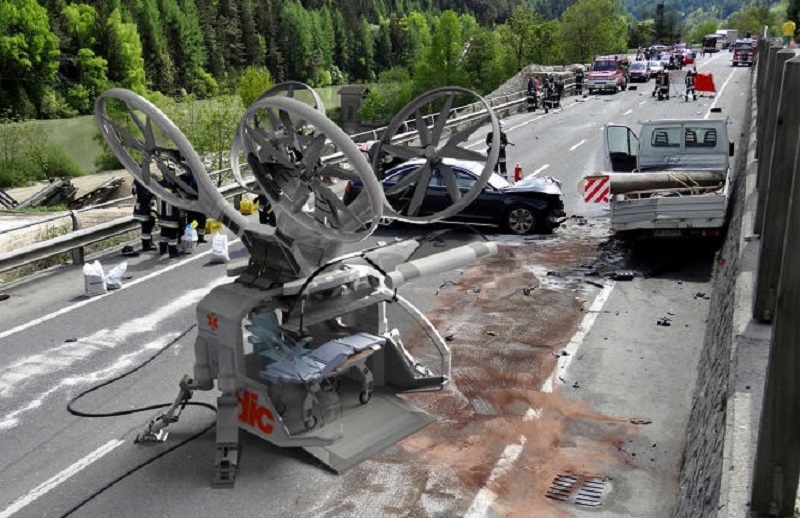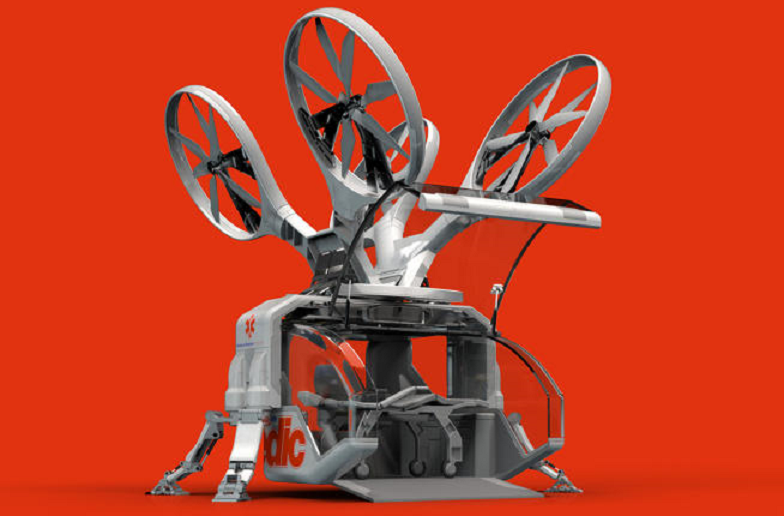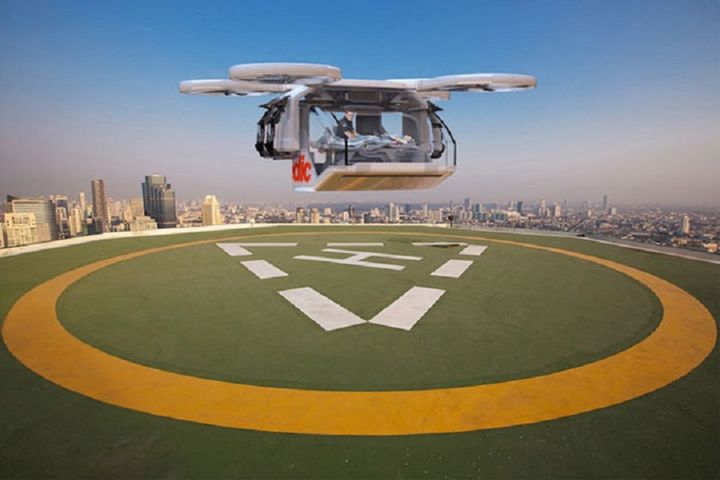
Using drones for public benefit
The mere mention of the word "drone" tends to conjure up unpleasant images in the public mind. Whether it's unmanned hunter-killers armed with missiles, small surveillance drones monitoring people on the street, or the spectre of autonomous vehicles one-day patrolling our skies, the idea of unmanned machines being a threat to our privacy or our very existence seems rather popular these days. And yet, the reality of Unmanned Aerial Vehicles (UAVs) is quite different.
Today, drones are part of a rapidly-evolving industry that is producing applications that go far beyond military and government use. Beyond Amazon and Google X's high-profile development of commercial delivery drones - Project Wing and Prime Air - drones are also being developed that can deliver wind and solar power. Facebook is even working on a series of high-altitude, solar-powered UAVs that will be able to blanket the world with Wi-Fi internet access.
And perhaps most impressively, there are even plans to develop a series of autonomous, flying ambulances; vehicles that can land at the scene of an accident and transport patients to the nearest hospital - all without the need of a human pilot. A leading contender in this developmental race is argodesign, an Austin, Texas-based firm that specializes in the design of new technologies.

Artist's concept of the Ambulance Drone being deployed to the scence of an accident. Credit: argodesign.com
The drone ambulance
This reimagined ambulance concept comes down to a one-person drone modeled after a standard quadcopter, driven by a GPS, pilot, or combination of both, that could be dispatched to an emergency scene with a single EMT. Smaller than the conventional ambulance and helicopter (it is roughly the size of a small car), their drone is designed to be able to land almost anywhere. Once it reaches the scene of an accident, the EMT would deploy, stabilizes the patient, load them up, and send them back to the hospital for further treatment.
At first sight, the concept presents numerous advantages. In addition to being able to make interventions in heavy traffic that much easier, it would also be able to land on top of buildings and perform airlifts from tight locations conventional helicopters cannot. And instead of a single pilot flying a single helicopter, one person could manage a whole fleet of drone ambulances remotely, relying on autopilot through the skies, and only taking over manual controls during more complicated takeoffs and landings.
The idea was born from a team brainstorming session around how health care could be made more accessible and how they might be able to build a better ambulance. The rise of autonomous vehicles inspired them to consider a self-driving ambulance, which in turn made them think of helicopters and drones. The rest developed from there.
As Mark Rolston, founder of argodesign, said in an interview with Co.Design: "Obviously, it’s not a thoroughly vetted concept, but I think it’s extremely intriguing where drones might show up. It would be nice to see them used this way, rather than another military function or more photography."

Artist's concept of the Ambulance Drone, by Argo Design. Credit: argodesign.com
Drone ambulance issues that need addressing
Naturally, there are many practical issues that need to be fixed before the Drone Ambulance can enter actual development. For example, this concept is made to have only room for one person, which means that the EMT would not be present for the patients trip back to the hospital. In many cases, an injured person is in need of qualified medical personnel to take care of them in transit to ensure they remain in stable condition. This would make such a thing impossible, at least with its current specifications.
In addition, in urban environments, the presence of ambulance drones presents some legal problems. Currently, many major cities around the world prohibit the use of flying drones, so these laws would need to be revised or reconsidered. There’s also the issue of price. Rolston estimates that an ultralight drone could be constructed for roughly $1 million, which is much more expensive than an ambulance, but still cheaper than a medical helicopter.
However, one cannot deny that as a concept, it is quite interesting, and that something of this nature is inevitable given the rapid advances in drones and self-driving cars. And argodesign's idea is not the only concept out there for a medical drone that can offer life-saving assistance in emergency situations. For example, Alec Momont - a student from Delfty Technical University in the Netherlands - has come up with the idea of fitting a quadcopter with a defibrillator to create a different take on the ‘drone ambulance.’
Drone ambulance benefits
According to Momont, his concept for a specially-equipped flying machine could potentially save the lives of thousands of people who suffer from sudden heart attacks, thanks to its ability to reach victims quickly and easily. Weighing just 4kg (8.8 pounds) and capable of speeds of up to 100 km/h (60 mph), these drones could reach tight spots in dense cities where EMT's have a hard time of reaching. Momont also estimates that having a network of these first-aid quadcopters across a city could give someone suffering from cardiac arrest an 80 percent chance of survival.
As Momont writes on his website, some 800,000 people people suffer a cardiac arrest in Europe every year, but their odds of survival are currently an abismal 8%. "The main reason for this is the relatively long response time of emergency services of around 10 minutes," he says, "while brain death and fatalities occur with four to six minutes. With the Ambulance Drone, it is possible to deliver a defibrillator to any patient within a 12-square-kilometer (4.6 square miles) zone within one minute,”
Without a doubt, the advent of drones that can save people's lives are likely to alter people's perceptions of them. Combined with self-driving "drone" cars, delivery drones, and unmanned vehicles that can deliver clean, sustainable energy, it appears that UAVs are merely one aspect of a future where automation and semi-autonomous machinery will be doing the legwork for us.
Top image: argodesign.com
Sources:
- www.argodesign.com/about.html
- mashable.com/2014/08/29/google-project-wing-design/
- www.fastcoexist.com/3022596/this-glider-could-make-wind-power-cheaper-than-coal#7
- www.designer-daily.com/this-drone-ambulance-concept-has-the-potential-to-save-more-lives-50875
- www.fastcodesign.com/3041696/this-drone-ambulance-is-totally-wild-and-totally-inevitable
- www.extremetech.com/extreme/171717-proposed-drone-aircraft-would-put-solar-and-wind-power-plants-in-the-sky
- www.extremetech.com/extreme/177922-facebook-eyes-up-solar-powered-drones-to-blanket-the-world-with-internet-access
- www.digitaltrends.com/cool-tech/check-out-the-ambulance-drone-that-could-one-day-save-your-life/
- alecmomont.com/projects/dronesforgood/








